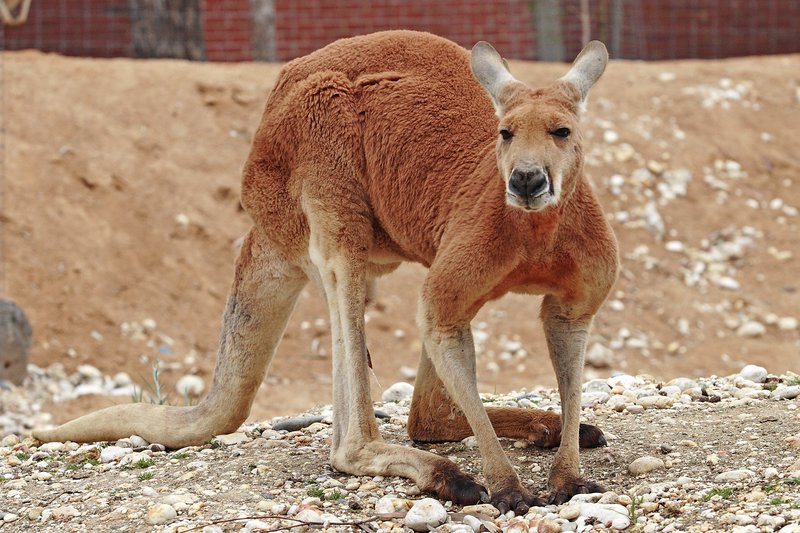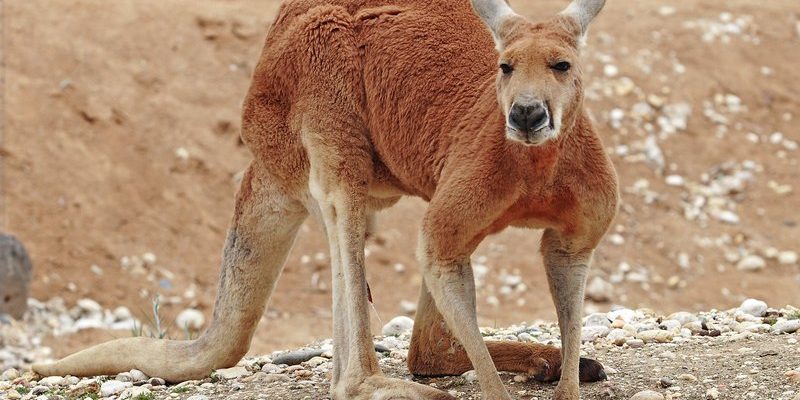
While these marsupials are often spotted in their natural habitat, the reality of their conservation status is more complex than one might think. It’s a bit like checking the weather before planning a picnic—what looks sunny from a distance can still have unpredictable clouds overhead. Let’s dive into the world of red kangaroos and explore their current status, the threats they face, and what’s being done to protect them.
Understanding the Red Kangaroo’s Habitat
The red kangaroo is a true symbol of the Australian outback, found mainly in arid and semi-arid regions. They thrive in areas with open plains, sparse trees, and plenty of grass. Imagine a vast expanse of dusty earth and scattered shrubs, where these graceful creatures can easily spot predators and hop freely. Their habitats vary from the red sands of the Simpson Desert to the grasslands of Queensland.
However, their home isn’t as secure as it used to be. Human activities, like agriculture and urban development, have encroached on their natural environment. Think about it: when we build cities or farms, we tend to take up space that wildlife calls home. This means less room for kangaroos to roam and find food, which can affect their populations.
Population Status: Are Red Kangaroos Really Endangered?
So, are red kangaroos endangered? Here’s the good news: currently, they are not classified as endangered. In fact, they are considered of “Least Concern” by conservation organizations. This classification is because they have large populations scattered across their habitats. Estimates suggest there are over 10 million red kangaroos in Australia. That’s a lot of hopping!
But, hold on, this doesn’t mean that all is well. Their population numbers can fluctuate based on various factors, including droughts, food availability, and hunting. During tough times like drought, the number of kangaroos can drop significantly. It’s similar to how plants struggle to grow without enough rain. If we don’t keep an eye on these conditions, there could be long-term impacts on their numbers.
Threats Facing Red Kangaroos
Even though red kangaroos aren’t endangered right now, they face several threats that could change this status in the future. Here are a few key challenges:
- Habitat Loss: As land is developed for farming or cities, the red kangaroo loses essential space to live and thrive.
- Climate Change: Changes in the climate can lead to unpredictable weather patterns, affecting food sources and hydration.
- Road Traffic: With increasing human activity, more kangaroos are being hit by vehicles, which can be devastating for local populations.
- Hunting: In some areas, kangaroos are hunted for meat and leather, which can impact their numbers if not managed sustainably.
It’s crucial to recognize these threats. While red kangaroos are currently doing relatively well, these factors could lead to a decline in their numbers if left unchecked. Protecting their habitats and managing human activities is essential for their continued survival.
Conservation Efforts for Red Kangaroos
Many organizations and government bodies are working hard to conserve the red kangaroo and their habitats. These efforts are like safety nets, catching potential declines before they become a crisis. Let’s look at what’s being done:
- Protected Areas: Establishing national parks and nature reserves creates safe havens for kangaroos to thrive.
- Research and Monitoring: Scientists regularly monitor kangaroo populations and study their behaviors to understand their needs better.
- Community Engagement: Engaging local communities helps educate people about the importance of kangaroo conservation and encourages responsible land use.
- Legislation: Laws regulating hunting and land development can protect kangaroo habitats and ensure sustainable management.
By recognizing the significance of these efforts, we can all play a part in conservation. Even small actions, like supporting sustainable agriculture or spreading awareness, can make a difference.
The Role of Public Awareness
Public awareness plays a massive role in the conservation of red kangaroos. When people understand the challenges these animals face, they become champions for their cause. It’s a bit like the community rallying together for a local sports team—the more people who care, the stronger the support.
Education programs, wildlife documentaries, and social media campaigns can all help raise awareness. You might even see local initiatives that encourage people to report kangaroo sightings or support wildlife organizations.
When you think about it, every little bit helps. Imagine if everyone contributed to preserving these magnificent animals and their habitats; we could see positive changes for red kangaroos and the ecosystems they help sustain.
Supporting Red Kangaroo Conservation
If you’re inspired to help red kangaroos, there are several practical ways you can make a difference:
- Donate to Conservation Organizations: Your contributions can support habitat restoration projects and research.
- Volunteer: Many organizations welcome volunteers to help with educational programs or habitat clean-ups.
- Advocate for Wildlife: Share your knowledge with friends and family. The more people who know, the more advocates there will be!
- Practice Responsible Tourism: If you visit Australia, be mindful of the environment and support local conservation efforts.
It’s not about being a superhero; even small actions can create ripples of change. The more we’re aware and engaged, the better the future will be for the red kangaroo.
So, is the red kangaroo endangered? For now, they’re not, but that status could change if we don’t address the threats they face. Just like any good community, we all have a role in ensuring the health of our wildlife.
By supporting conservation efforts and staying informed, we can help these magnificent creatures continue to thrive in their natural habitats. The red kangaroo isn’t just a symbol of Australia; it represents a shared responsibility for the health of our planet. Let’s work together to keep it hopping along for generations to come.

